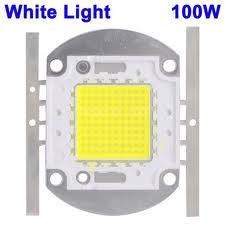

Input voltage :10-32V
Output voltage: (a) continuously adjustable (12-35V)
Output Current: 6A (MAX)
Input Current: 10A (MAX) (Please enhance heat dissipation over 10A,)
Output power: natural cooling 100W (MAX), plus fan 150W (MAX)
Easy to drive 65W 90W dual-core notebook computers, including
With a 12V battery with plain 19V 3.42A laptop module temperature of about 45 degrees
Conversion efficiency: 94% (Input 16V Output 19V 2.5A when measured) (for reference only)
Operating temperature: Industrial grade (-40 ℃ to +85 ℃) (ambient temperature exceeds 40 degrees, lower power use, or add fan)
Full load temperature rise: 45 ℃
No-load current: Typical 25mA
Short circuit protection: None (Please enter install over current protection device)
Input Reverse Polarity Protection: None, the input diode in series
Dimension: 65x 49 x 23 mm
**broken link removed**

 can i use a boost converter for 100W led driving ?
can i use a boost converter for 100W led driving ?
thank you.
